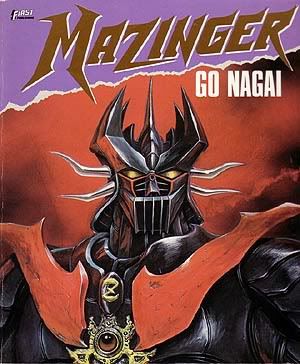
Go Nagai Creator, Story and Art; Takayuki S. / Mecha Design; Kazuhiro Amachi / Color; David Lewis and Alex Wald/ English Adaptation
First Comics, 1988
A few episodes back, I erroneously stated that Glenn Danzig was the first to bring Go Nagai’s work over to the US with Devilman (in which he infamously added nostrils to the characters for the American version).
This was categorically incorrect, and I should have known it at the time.
Nagai’s first brush with the US was in the form of the Shogun Warriors comic from Marvel in 1979, which featured many robots originally designed by Nagai: a comic which led to the fan-sweat-inducing photo below from the final issue of FOOM magazine.
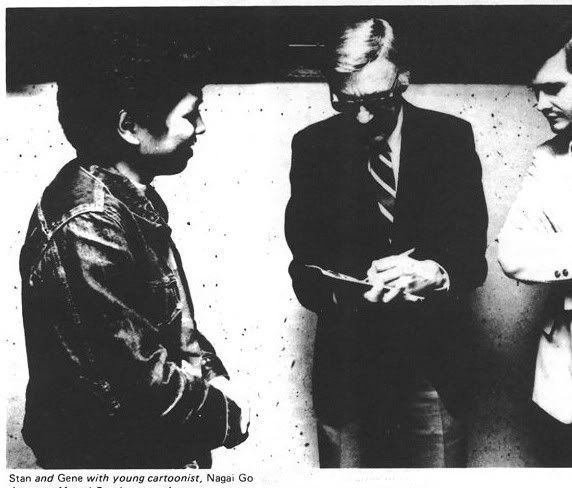
Note that “young cartoonist, Nagai Go,” though only about 33 at the time, would have already drawn thousands of pages and been a millionaire.
Anyway, Shogun Warriors still wasn’t the first “real” Go Nagai comic in the US (it was by Doug Moench and Herb Trimpe). No, that “honor” goes to Mazinger, sometimes referred to as Mazinger USA, published by First Comics in 1988 — although, some might argue that it still doesn’t count as “real.”
This was one of those comics that I “co-owned” with my younger brother back in the era when we still skipped past all the credit pages. We didn’t even understand the title, except we knew it was Japanese and it sounded cool: we wondered if “Go Nagai” was some Japanese word that they didn’t translate for authenticity’s sake and was part of the title, or if maybe the author was Mazinger and the title of the book was “Go Nagai,” whatever that might mean.
Of course, reading the book even once would make it clear that “Mazinger” was the name of the mecha, which makes me wonder if either of us actually read the thing or just stared at that wicked cover. (Note also that the book features exposed boobies, so we may have just flipped straight to that every time.)
Or maybe you’re thinking we were just idiot kids. Not so fast! The book is renowned for being awful, and reading it today (the same copy we had more than 20 years ago), it is indeed a disjointed mess that you could forgive a 13-year-old for not making heads or tails of.
The book is a “re-imagining” of Nagai’s classic original Mazinger stories set in an apocalyptic future with lush, fully painted artwork. It opens with a quote from Gulliver’s Travels about relating to giants, which makes you think it’s going to take a philosophical approach overall to human relationships with giant robots. We then get a few pages of lonnnng exposition in captions about the legend of Mazinger on some other world, and how the Earth was ruined over hundreds of years by conflicts and nuclear war until: “Today, as every day, the flames of war rage in every corner of the globe. War without quarter. War without end. War for a race that has forgotten all other ways of life.” What follows is 21 pages (out of 52!) of robots gorgeously hacking the shit out of each other with very little dialog. It’s action of the type that’s so awesome sometimes you can’t even tell what’s going on.
At this point, I’m wondering why the book has such a bad reputation. I mean, what more do you want in life?
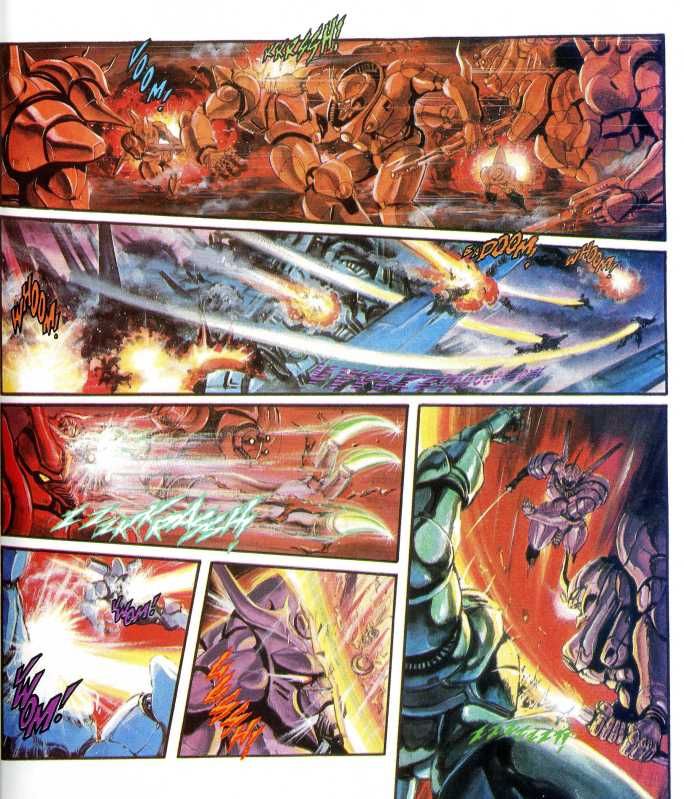
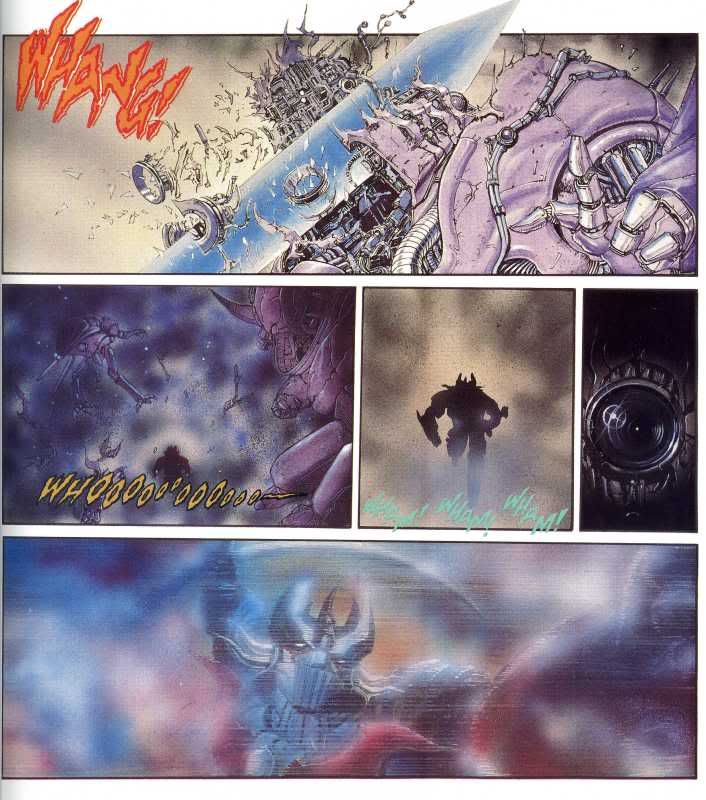
Well, this is where things start to go off the rails. Page 22 of 52 might seem late in the game for the sudden development of PLOT (the first real inkling of any so far), but the Mazinger mecha and it’s pilot, Major Kabuto, are caught in a massive explosion, and there is another long exposition. The blast rips open the fabric of space time. “Now, as only rarely before in history, an abnormal resonance of space-time created a vortex” and Mazinger is sucked into a parallel dimension.
Cut to: 6 pages (again, mostly wordless) of Mazinger stumbling across some lizard men (“Zard Man”) attacking a semi-nude princess and hacking them to bits. In this universe, humans like the princess are Mazinger size.
Back at her castle, we get 3 more pages of heavy captions explaining the war with the Zard Men. Now I’m thinking the book is going to be about Kabuto’s life on this world fighting the Zard Men (though there aren’t many pages left to go). Maybe it will end “To Be Continued”…?
Now we get 4 pages of negotiations between Mazinger and the Princess (always semi-nude) in which she wants to hire him to fight the Zard war for her. To which the first words out of Mazinger are: “I am merely a passing traveller. The problems of your kingdom are of no concern to me. And yet… Princess Krishna, if you wish, I shall destroy all your enemies single-handed. For you alone. Princess, you are she of who I have always dreamed. Perfection incarnate.” So, just a few minutes earlier he’s been blown into another dimension through a rare confluence of energies, but he only considers himself a passing traveler? How does he intend on getting home? And then his only desire is to hook up with the first person he meets?
As if the bonkers plot structure wasn’t enough at this stage (exposition/plot change, fight, exposition/plot change, fight…), now the dialog decides to be stupid too. The princess agrees to be Mazinger’s lover (?) in return for his services. I’m not sure what she thinks he is — a robot, a man in armor? Anyway, Kabuto pops out of the head, revealing himself to be a little 6-inch man, who says, “Boy, am I tired! Phew! Being stuffed into these machines really wears me out!” This is the same guy who delivered the “you are she” lines above. He constantly speaks like a 16-year old. P.S. This reveal takes 4 pages.

Seeing him thus, the princess says: “I’ve heard ancient legends about the little people. There once was a man from the world of faerie. I believe his name was — Swift.” Yes, in a few lines of dialog it is then worked out that once upon a time Jonathan Swift also fell through a dimensional portal to this world and was then inspired to write Gulliver’s Travels. No metaphors about mecha here, this shit is literal.
6 pages of Mazinger waiting for the Zard Men to show up on the battle field.
4 pages of Mazinger firing every missile he’s got in one shot, which explode and land him back on Earth. Yes, he did not even fight the Zard Men in a climactic battle, he just blew them up in one shot. And, yes, the plot flip-flopped again and he ended up back on Earth!!
3 pages of dénouement in which Kabuto wistfully thinks of: “A world of beautiful dreams. A world of romance and adventure. Earthmen have forgotten all about such things. We’re just like lizards.”
There are two consistent problems: 1) Too much highly detailed (!) “world-building” exposition, which would have been necessary if there had been any development in plot which depended on it. There isn’t. 2) Too much flip-flopping of plotlines with no noticeable change in events resulting. Meaning: He fights giant robots, he gets zapped to another dimension, he fights giant Zard Men, he gets zapped back to Earth, he fights giant robots. Neither the exposition nor the plot flips are necessary for any of this.
Now let’s a get few things straight here. Nagai is a manga giant. He practically invented this giant piloted robot genre singlehandedly. I love a lot of Nagai’s work, including what I’ve read of the original Mazinger, Devilman, and his sexually offbeat stuff like Harenchi Gakuen. I have a hunch — and this is the snarkiest thing I will say in this review — that he was trying to create what he perceived to be an American-style comic book.
Best enjoyed when you’re 15 years old and can’t understand even the title.
P.S. When we were little kids, my brother and I also had one of the giant Mazinger toys from Mattel’s Shogun Warriors line. Never once did we realize that and this comic were related.
P.P.S. A French-language storybook found in the French side of my elementary school library based on Nagai’s Grendizer cartoons was a formative experience for me in my even younger days.
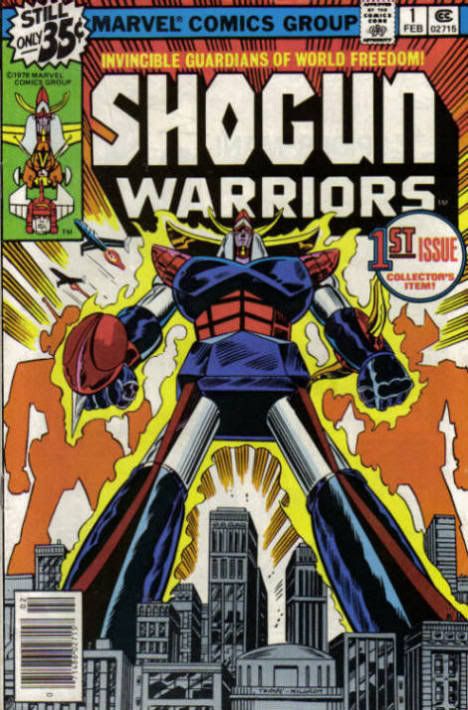
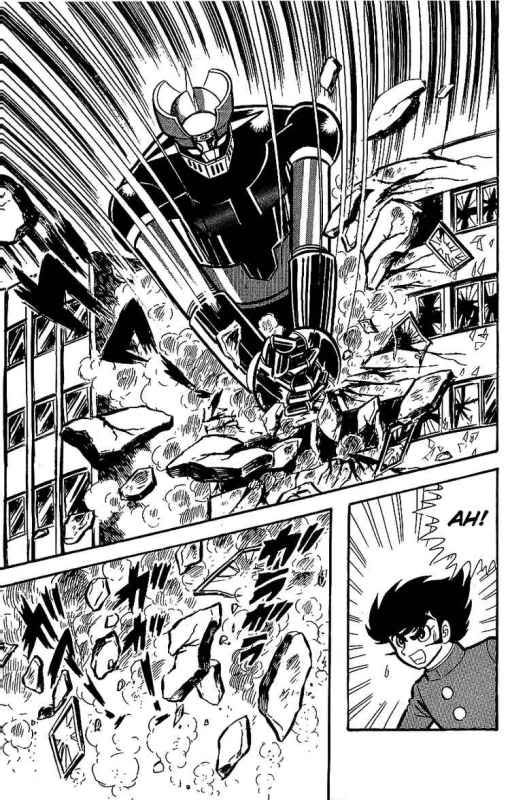
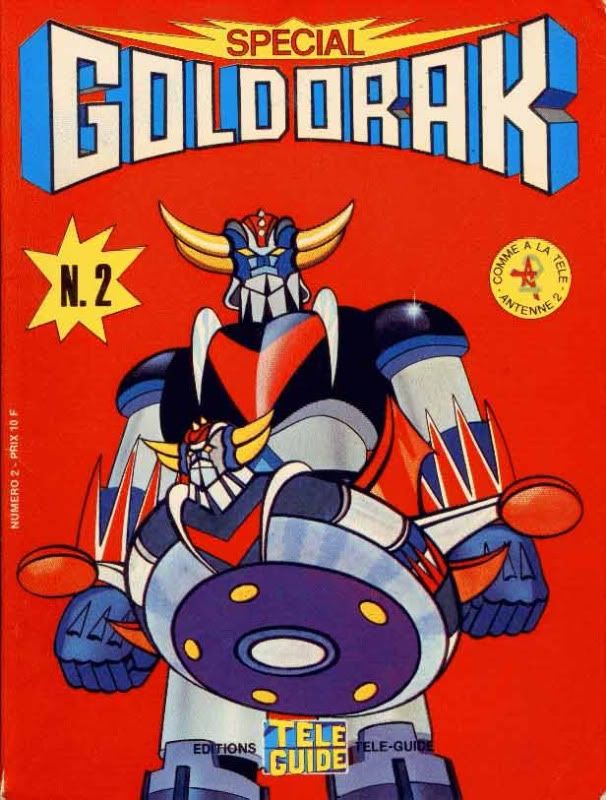
KS
————————————————————————————-
Kumar Sivasubramanian is the writer of Weird Crime Theater.
